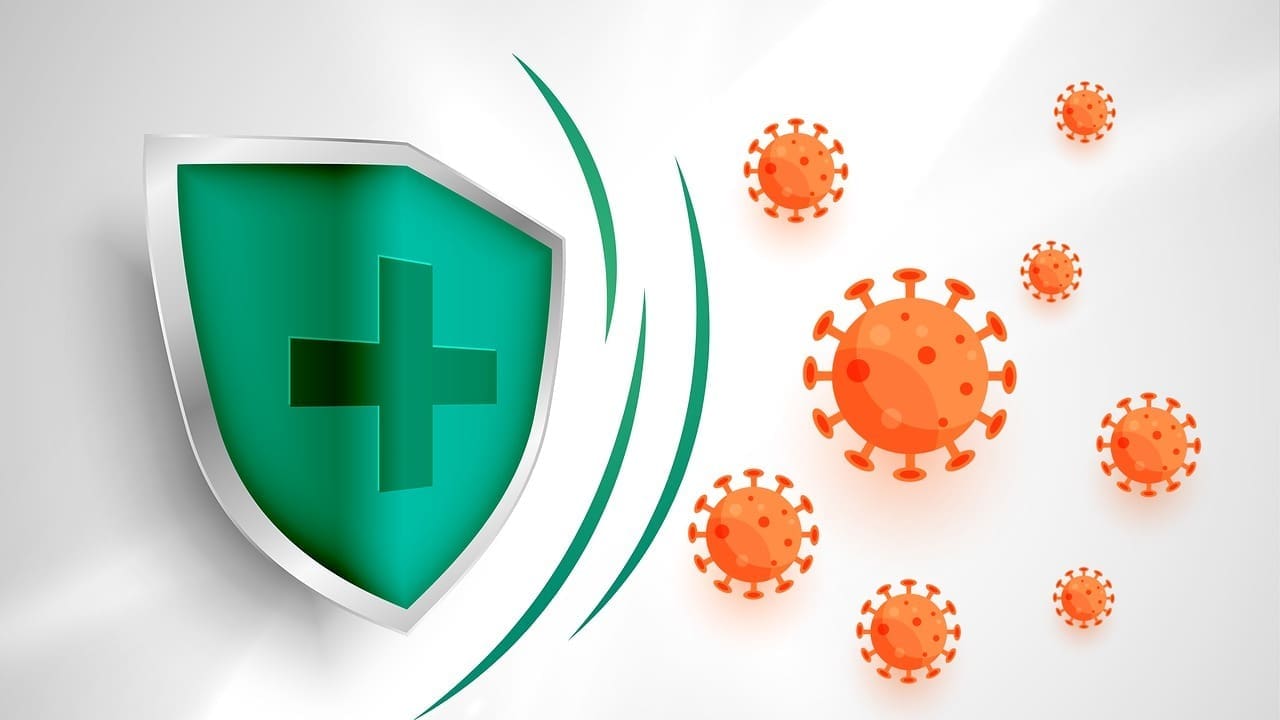Last Updated on November 26, 2025 by Bilal Hasdemir

The global bioelectric medicine market is expected to hit USD 24.36 billion by 2030. This growth is thanks to new tech and higher healthcare costs. The main reason is the rise in implantable devices for pain control, changing how we handle pain.
Healthcare is always changing, and we need better pain management solutions now more than ever. Implantable pain management implants are key in meeting this need. They offer a lasting and effective way to deal with chronic pain.
These new solutions are not just improving patient results. They are also shaping the future of pain management devices. With the latest technology, these devices are set to change how we manage pain.
Key Takeaways
- Implantable devices are transforming pain relief by providing more effective and lasting solutions.
- The global bioelectric medicine market is projected to reach USD 24.36 billion by 2030.
- Technological advancements are driving the growth of the pain management industry.
- Implantable pain management implants are emerging as a vital component in addressing chronic pain.
- These innovative solutions are improving patient outcomes and redefining the future of pain relief.
The Evolution of Pain Management Devices

The world of pain management has changed a lot with the arrival of implantable devices. For a long time, people used oral meds and physical therapy to manage pain. But these methods had their downsides, like side effects and not always working well.
From Traditional Methods to Modern Implantable Solutions
Medical tech has led to a big change towards implantable devices for pain. Companies like Medtronic and Boston Scientific are leading this change. They make devices that send signals to nerves to help with chronic pain. These new tools offer better and more focused pain relief than old methods.
These devices could greatly help people with chronic pain live better lives. They send therapy right to the pain spot. This means less need for medicines that affect the whole body and fewer side effects.
The Growing Need for Alternative Pain Relief Options
The opioid crisis has shown we need new ways to manage pain. So, there’s a big push for implantable devices that can help without the dangers of opioids. These devices are becoming key in pain management, helping those who didn’t get better with traditional treatments.
The tech behind implantable pain management is getting better fast. There’s always new research and development to make these devices better and safer. As this field keeps growing, we’ll see even more creative ways to manage pain.
Understanding Implantable Devices for Pain Control

Implantable devices are changing how we manage pain. They offer new ways to deal with chronic pain. These devices are key in treating many pain conditions, giving patients better options than old methods.
How Implantable Pain Management Technology Works
These devices are implanted in the body to send therapy directly to the pain. For example, spinal cord stimulators send electrical signals to the spinal cord. This stops pain signals from reaching the brain. Peripheral nerve stimulators target nerves to block pain signals.
Types of Pain Effectively Treated with Implants
Implants work best for chronic pain conditions that other treatments can’t fix. They help with:
- Chronic back pain
- Failed back surgery syndrome
- Complex regional pain syndrome
- Severe neuropathic pain
These devices target pain at its source. This can greatly improve life for those with these conditions.
Advantages Over Traditional Pain Management Methods
Implantable devices have big benefits over traditional pain treatments. They offer long-term pain relief with fewer side effects than pills. Plus, they can be adjusted to fit each patient’s needs.
Using these devices for pain management is a big step forward. It gives new hope to those who haven’t found relief elsewhere.
Who Can Benefit from Pain Management Devices
Implantable pain management devices are a game-changer for those with chronic pain. They help those who haven’t found relief with traditional treatments.
Ideal Candidates for Implantable Pain Relief Technology
People with chronic pain that hasn’t improved with usual treatments are good candidates. This includes those with severe arthritis, neuropathic pain, or who have had many surgeries without lasting pain relief.
A healthcare professional will carefully check if a device is right for you.
Medical Conditions Most Responsive to Implantable Therapy
Many chronic pain conditions can be managed with these devices. These include:
- Chronic back pain
- Neuropathic pain
- Complex Regional Pain Syndrome (CRPS)
- Failed Back Surgery Syndrome (FBSS)
These conditions often need a team effort to manage. Implantable devices are a key part of this effort.
The Patient Screening and Trial Process
Before getting a pain management device, patients go through a screening and trial. This includes:
- A detailed medical history check
- A psychological evaluation
- A trial to see if the device works
This trial is important to see if the device will work for you. It also helps tailor the treatment.
| Condition | Implantable Device | Success Rate |
| Chronic Back Pain | Spinal Cord Stimulator | 70-80% |
| Neuropathic Pain | Peripheral Nerve Stimulator | 60-75% |
| CRPS | Dorsal Root Ganglion Stimulator | 80-90% |
Knowing who can benefit and which conditions respond well helps doctors offer better pain management.
Spinal Cord Stimulators: Advanced Neuromodulation
Spinal cord stimulation is a new way to fight chronic pain. It uses advanced technology to help people manage pain better than old methods.
How Spinal Cord Stimulation Technology Works
Spinal cord stimulators send electrical signals to the spinal cord. They stop pain signals from reaching the brain. This neuromodulation technique greatly reduces chronic pain for many.
The devices have a small generator, leads, and electrodes under the skin. The generator runs on a rechargeable battery. Patients can adjust settings with a remote control.
This lets them customize their pain relief for their daily needs and pain levels.
Leading Spinal Cord Stimulator Models and Manufacturers
Several companies lead in spinal cord stimulators. Nevro Corp and Medtronic are top makers. They offer advanced models with new features.
- Nevro Corp’s HF10 therapy uses high-frequency stimulation. It’s effective for chronic pain without the usual side effects.
- Medtronic’s Intellis device has features like conditional stimulation and a rechargeable battery. It makes treatment more effective and convenient for patients.
These new spinal cord stimulation technologies are making a big difference. They’re improving how we manage chronic pain.
Intrathecal Pain Pumps: Targeted Medication Delivery
Intrathecal pain pumps have changed how we manage chronic pain. They send medicine straight to the spinal cord. This can lead to less side effects than pills or injections.
The Science Behind Drug Delivery Systems
Intrathecal pain pumps are small devices implanted under the skin. They connect to a catheter that sends medicine to the spinal cord. The pump releases medicine at set times for steady pain relief.
Key components of intrathecal pain pumps include:
- A refillable reservoir for the medication
- A programmable pump that controls the dosage and release of the medication
- A catheter that delivers the medication to the spinal cord
Medications Commonly Used in Pain Pumps
The medicines in pain pumps are strong and chosen for each patient. They include:
- Opioids: Like morphine and hydromorphone, for severe pain.
- Baclofen: Mainly for severe spasticity.
- Local anesthetics: Such as bupivacaine, for different chronic pain types.
Choosing the right medicine and dosage is key for pain pumps. Doctors and patients work together to find the best treatment. This ensures the best pain relief with few side effects.
Peripheral Nerve Stimulators: Focused Relief
Peripheral nerve stimulation is a new way to fight chronic pain. It directly targets the nerves that carry pain signals. This method has shown great promise for those who haven’t found relief with other treatments.
Targeting Specific Nerve Pathways for Pain Control
These devices send electrical impulses to specific nerves. This helps block pain signals before they reach the brain. They are implanted near the pain-causing nerves and can be adjusted for each patient.
The process starts with a trial phase using temporary electrodes. If it works, a permanent device is implanted. This way, the treatment can be tailored to each person’s needs.
Common Applications for Peripheral Nerve Stimulation
Peripheral nerve stimulation helps with many chronic pain issues. It’s used for:
- Post-traumatic or post-surgical pain
- Neuropathic pain
- Chronic pain from nerve damage or compression
These devices are a valuable option for those who have tried other treatments without success.
The success of peripheral nerve stimulators is clear in this comparison:
| Treatment | Success Rate | Average Pain Reduction |
| Peripheral Nerve Stimulation | 75% | 50% |
| Traditional Medication | 40% | 30% |
| Physical Therapy | 60% | 40% |
By focusing on the pain-causing nerves, peripheral nerve stimulators offer a targeted and effective solution. This improves the lives of many patients with chronic pain.
Dorsal Root Ganglion Stimulators: Targeted Therapy
Dorsal root ganglion (DRG) stimulators are a big step forward in pain management. They are made to target the dorsal root ganglion, a key part in sending pain signals. This helps in treating chronic pain.
Precision Targeting of the Dorsal Root Ganglion
The DRG is a group of nerve cells in the spine. It’s important for sending pain signals to the brain. DRG stimulators send electrical impulses to this area. This helps control pain signals more precisely.
This method can give better pain relief with fewer side effects. It’s different from older pain management ways.
Conditions Best Treated with DRG Stimulation
DRG stimulation is good for many complex pain conditions. These include:
- Complex Regional Pain Syndrome (CRPS)
- Chronic post-surgical pain
- Failed Back Surgery Syndrome (FBSS)
- Peripheral neuropathic pain
A study showed DRG stimulation works better than traditional spinal cord stimulation for CRPS. It gave better pain relief.
| Condition | DRG Stimulation Efficacy | Traditional SCS Efficacy |
| CRPS | 74.2% | 53.4% |
| Chronic post-surgical pain | 67.5% | 51.2% |
| FBSS | 62.1% | 48.5% |
The precise targeting of DRG stimulators is great for treating pain in specific areas. It offers a focused and effective treatment option.
Vagus Nerve Stimulators: Multifunctional Pain Relief
Implantable vagus nerve stimulators are a new way to manage pain. They work by targeting the vagus nerve, which is key in how we feel pain.
The Vagus Nerve’s Role in Pain Perception
The vagus nerve helps control many body functions, including pain. Stimulation of the vagus nerve can release chemicals that lower pain. Studies show it helps with chronic and neuropathic pain.
“The vagus nerve is a complex and multifaceted nerve that influences a wide range of physiological processes.” It’s being studied for treating pain, epilepsy, and depression.
Beyond Pain: Additional Benefits of Vagus Nerve Stimulation
Vagus nerve stimulation does more than just relieve pain. It can also reduce inflammation, improve mood, and boost brain function. The multifaceted benefits make it a good choice for people with complex health issues.
As a recent study found,
“Vagus nerve stimulation has emerged as a promising therapeutic modality for various neurological and psychiatric disorders.”
Its ability to tackle many health problems at once makes it valuable in medicine.
Vagus nerve stimulators are a big step forward in pain management and more. As research grows, so will its uses, bringing hope to patients everywhere.
Occipital Nerve Stimulators: Headache Management
Occipital nerve stimulators are a new hope for those with chronic headaches and migraines. They send electrical impulses to the occipital nerves at the back of the head.
Targeting Chronic Headache and Migraine Pain
These devices are great for people with chronic headaches who haven’t found relief elsewhere. A small device is implanted to stimulate the occipital nerves, easing pain.
The way they work is through neuromodulation. By stimulating the occipital nerves, they block pain signals to the brain. This makes the pain less felt.
Patient Outcomes and Success Rates
Studies show that occipital nerve stimulators greatly improve life for those with chronic headaches. Key findings include:
- Less frequent and severe headaches
- Higher patient satisfaction with treatment
- Potential for less medication use
While results can differ, the success rate for headache management is encouraging. It offers new hope for those with chronic headaches.
Wireless Microstimulators: Next-Generation Pain Relief
Wireless microstimulators are a big step up in pain relief. They offer a way to manage pain without the hassle of batteries or complex surgeries.
Battery-Free and Minimally Invasive Technologies
One great thing about wireless microstimulators is they don’t need batteries. This means no need for extra surgeries and less chance of problems. They work with electromagnetic induction or ultrasound energy transfer to keep pain away.
These devices are also easy to put in because they’re not invasive. This makes recovery time shorter and the risk of surgery problems lower. It’s a better choice for those looking for pain relief.
Future Developments in Wireless Pain Management
As tech gets better, so will wireless microstimulators. We might see improved energy efficiency, enhanced pain targeting, and integration with other medical devices. This could lead to better care for patients.
Scientists are looking into using artificial intelligence and machine learning algorithms to make these devices smarter. They could learn from patients and adjust to give better pain relief.
The future of managing pain without wires is bright. It could greatly improve life for those with chronic pain. As these technologies get better, we’ll see more benefits for patients.
Conclusion: The Future of Implantable Pain Management Technology
The world of pain management is changing fast with new implantable devices. These devices are making a big difference in how we treat pain. They offer hope to those who suffer from chronic pain.
New technologies in bioelectric medicine and neuromodulation are making pain implants better. These improvements are not just making pain relief more effective. They are also making life better for patients. With more research, the future of these implants looks very promising.
We can look forward to even better treatments for pain in the future. New technologies like wireless microstimulators and advanced neuromodulation will open up new possibilities. This means doctors can give patients more tailored and effective pain relief. This will lead to better results for patients.
FAQ
What are implantable devices for pain management?
Implantable devices for pain management are medical tools put in the body to help with chronic pain. They include spinal cord stimulators and intrathecal pain pumps. Other types are peripheral nerve stimulators and dorsal root ganglion stimulators.
How do implantable pain management devices work?
These devices send electrical impulses or medication to the pain area. This stops pain signals from reaching the brain. The exact way it works depends on the device type.
What types of pain are effectively treated with implantable devices?
These devices can help with back pain, neuropathic pain, and complex regional pain syndrome. They also work for some headaches and migraines. The right device depends on the patient’s condition.
Who are ideal candidates for implantable pain relief technology?
People with chronic pain that hasn’t gotten better with other treatments are good candidates. They go through a screening and trial to see if it’s right for them.
What is the difference between spinal cord stimulators and intrathecal pain pumps?
Spinal cord stimulators send electrical impulses to the spinal cord. Intrathecal pain pumps put medication into the spinal fluid. Both help with chronic pain but in different ways.
Are there any risks or complications associated with implantable pain management devices?
Like any surgery, there are risks, like infection or device malfunction. But these risks are low. Devices are made to be safe and effective.
Can implantable devices be used in conjunction with other pain management treatments?
Yes, these devices can work with other treatments like medication or physical therapy. This can help get the best pain relief.
How do wireless microstimulators differ from traditional implantable pain devices?
Wireless microstimulators are newer and don’t need batteries. They are less invasive than traditional devices. This could mean fewer complications and easier use.
What is the future of implantable pain management technology?
The future looks bright with new designs and techniques. These advancements could make devices more effective and safer. This could change how we manage pain.
Are implantable pain management devices covered by insurance?
Many devices are covered by insurance, but it depends on the device and the patient’s condition. It’s best to check with your insurance provider.
Reference:
- Eckermann, J. M., et al. (2022). Systematic literature review of spinal cord stimulation in managing chronic back pain: Current evidence and outcomes. Neuromodulation. https://www.sciencedirect.com/science/article/pii/S1094715921064321






